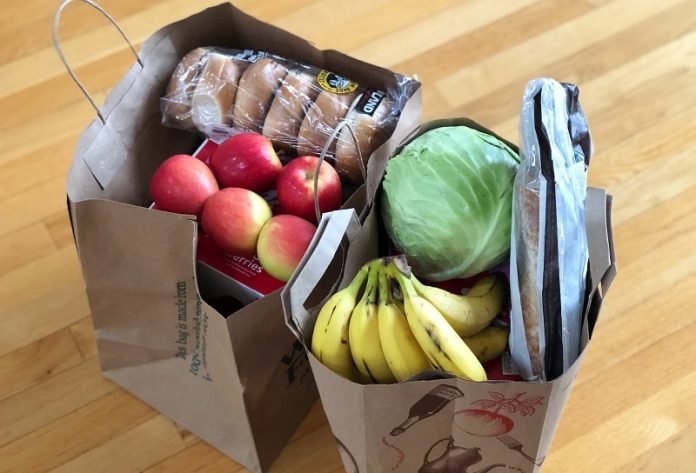
Donating to food pantries does wonders for the public image of grocery store chains.
As it turns out, food donation is also great for the stores’ bottom line.
Northeastern business professor John Lowrey recently published a paper stating that donation of perishables improves stores’ profitability by making room for more appealing—and higher priced products—and drawing discerning rather than price-conscious shoppers.
“If I’m replacing low-quality goods and only having fresh, high-quality, high-priced products, the markup will be higher on average,” he says.
Food donation is big business, with 30% of donations to the 200 food banks across the U.S. operating the umbrella of Feeding America coming from retail stores such as Sam’s Club, Walmart and Kroger, Lowrey says.
The question people ask is “Why do retailers donate food?” he says.
Historically, the perception has been that grocery stores make donations to court community goodwill, reduce the cost of disposing of food in the trash and reap the benefits of tax deductions, says Lowrey, a supply chain expert and assistant professor at Northeastern’s D’Amore-McKim School of Business.
He suspected there had to be more to the grocery store food donation phenomenon, seeing as it comes to about $10 billion per year.
“There had to be some other mechanism explaining these sustained high volume donations to food banks,” Lowery says.
What Lowrey and two co-authors to the paper published in a trade journal discovered was that donation of bread, produce, meat and dairy products a bit past their prime created space on the grocery store shelves for more appealing products that could continue to be sold at a higher price point.
Given the tight margins that grocery stores operate on, that came to an increase in profits of 9% for stores donating versus not donating, Lowrey says.
The issue comes down to the best way to handle perishables that have lost their freshness, such as a banana that has developed brown spots, he says.
One option for the store is to put it on sale at a lower price. There are several drawbacks with that situation, Lowrey says.
The store has to maintain room for it on a bin or shelf while reducing the profit margin of a potential sale. And if the banana doesn’t sell, the store has to pay for it to be hauled away in the rubbish.
Feeding America solves the problem by picking up the would-be sale items in refrigerated trucks for food banks such as the Greater Boston Food Bank, Lowrey says.
“Pricing within the store is actually a very challenging problem. One solution is just to remove low quality goods,” he says. “I just want to remove it from the shelf altogether and donate it at zero direct financial cost to me as the retailer.”
In return, that draws customers seeking a high quality, fresh product and discourages the more price conscious customers looking for sale items, Lowrey says.
Over time, the practice builds the perception that the store offers quality items, he says.
“Retailers live and breathe on their quality perception. If I’m going to Kroger expecting a deal, expecting a promotion, Kroger has already lost. They want me to associate fresh, high-quality goods with their brand.”
The donation system also benefits the environment by cutting down on food waste, Lowrey says. He says that Feeding America has a direct to pantry program that also cuts down on transportation costs by having donations delivered from local stores directly to pantries under its umbrella.
Retail food donations, Lowrey says, “are just really important.”
Written by Cynthia McCormick Hibbert.



